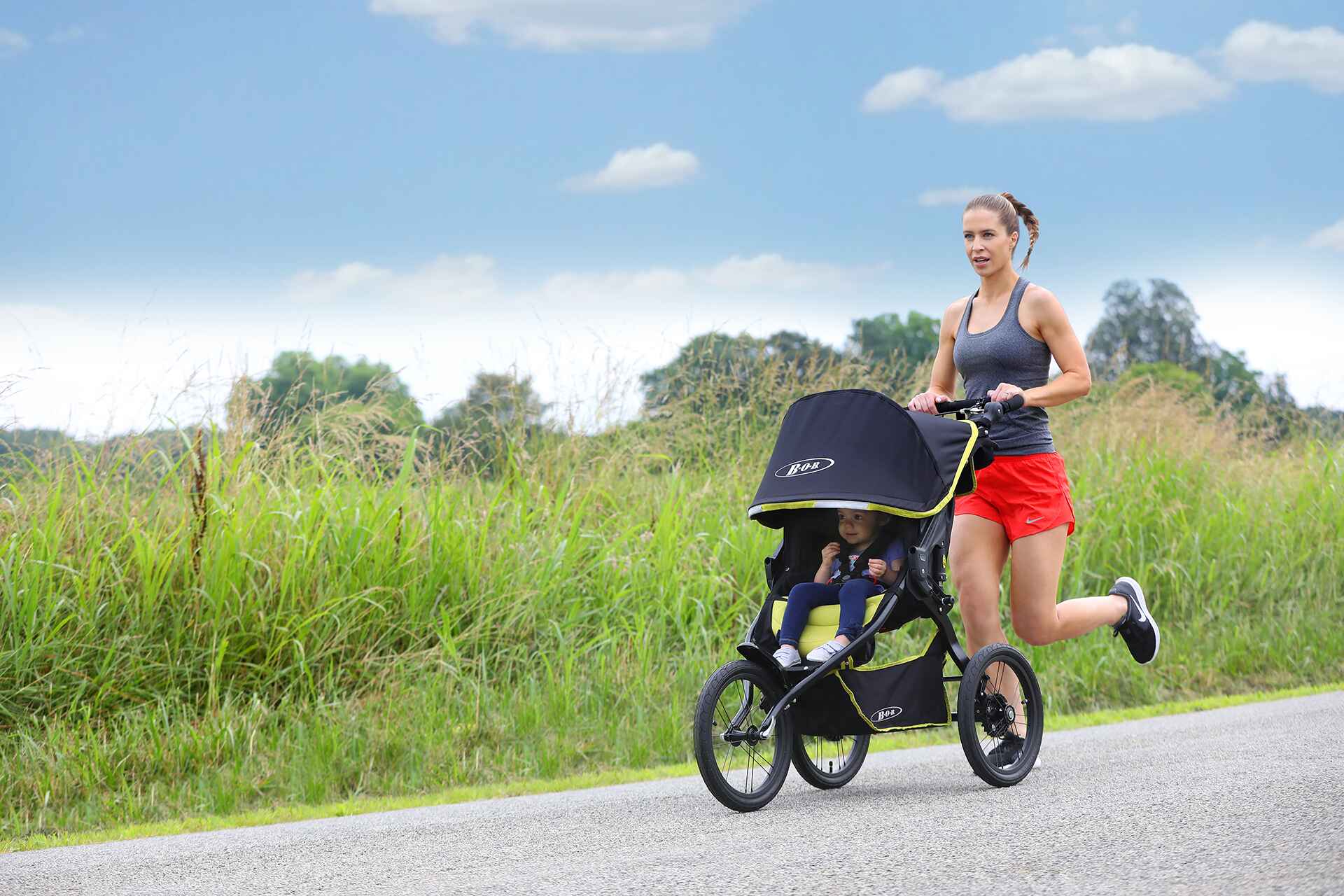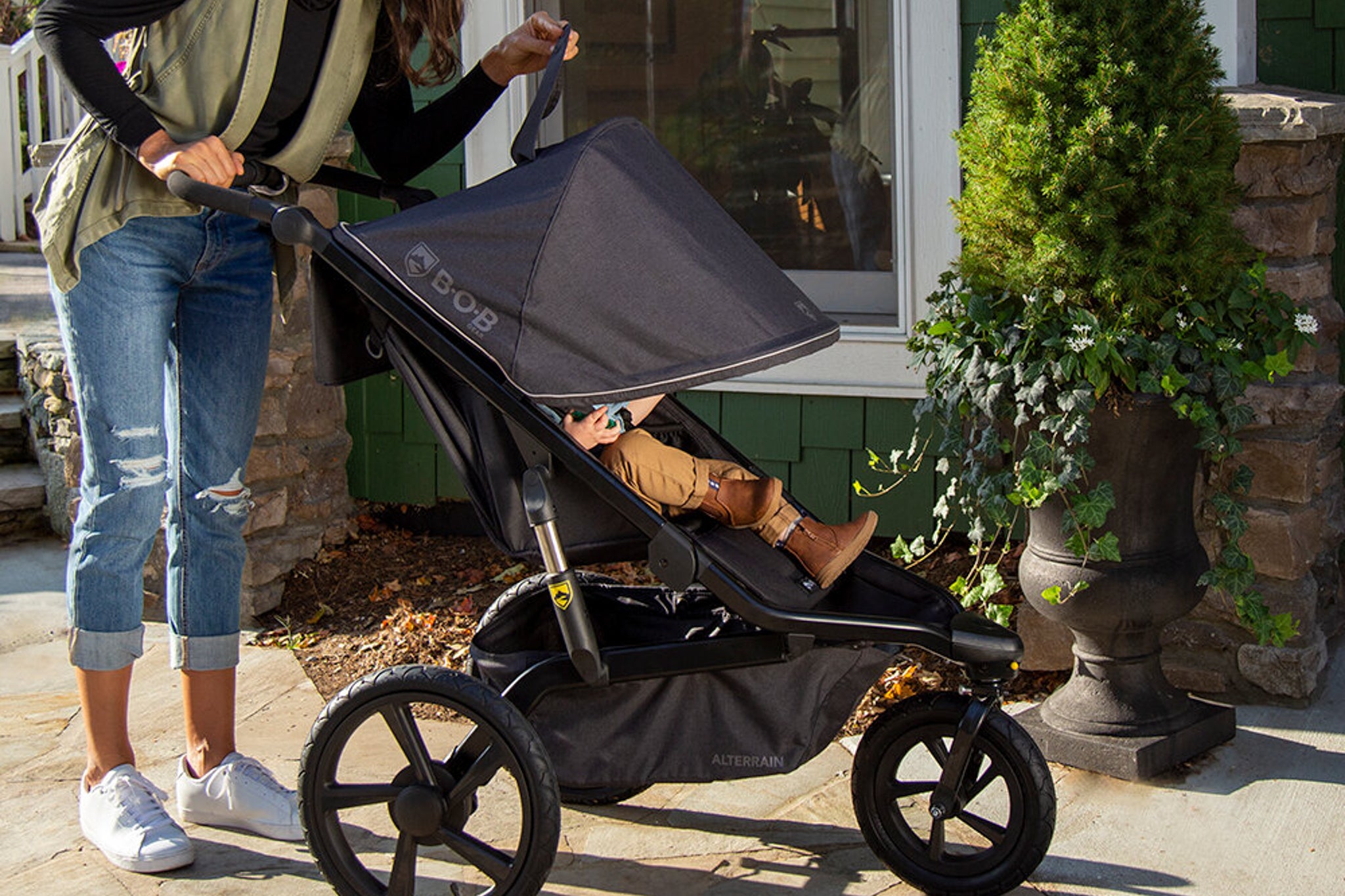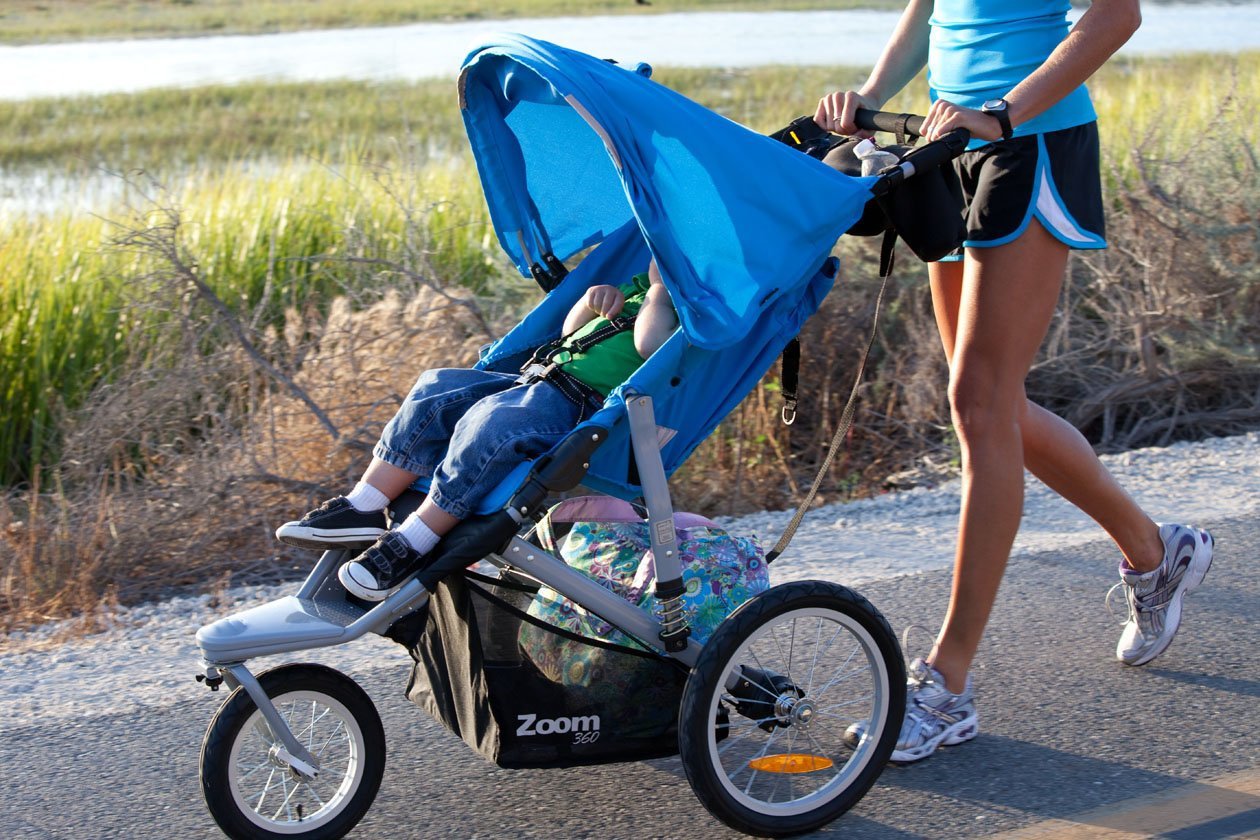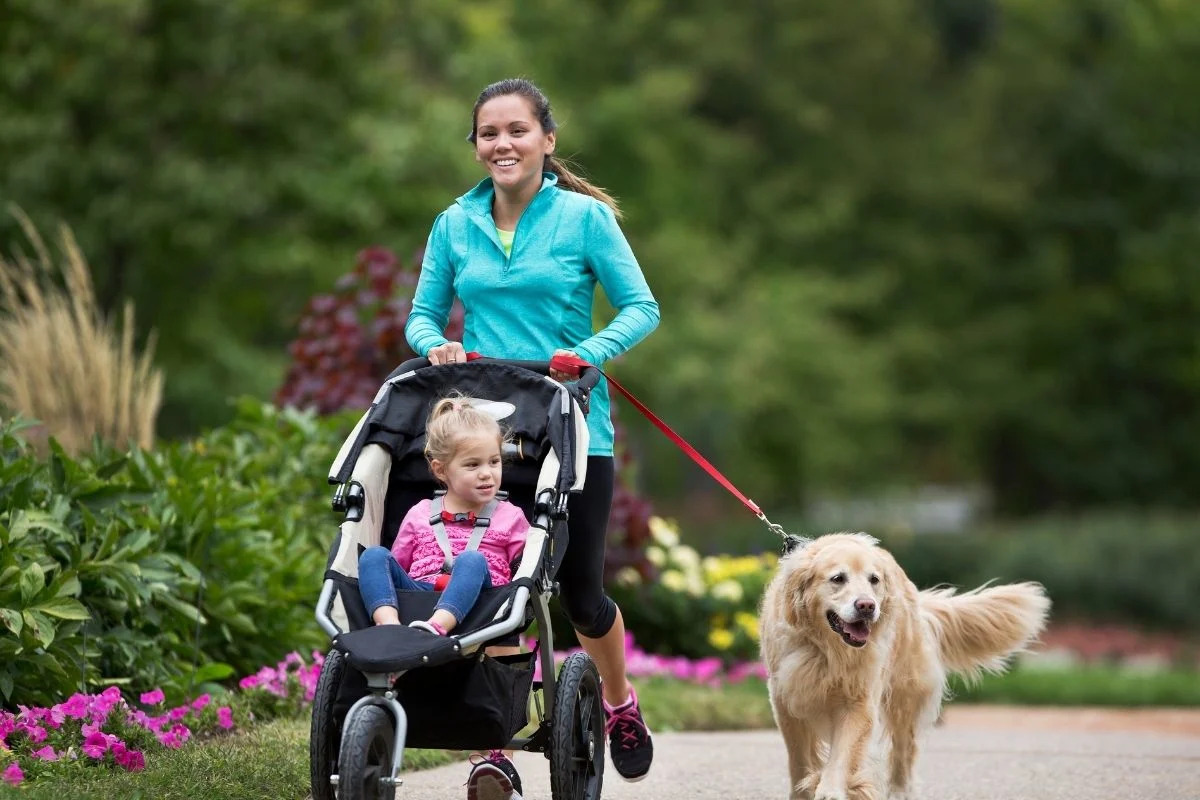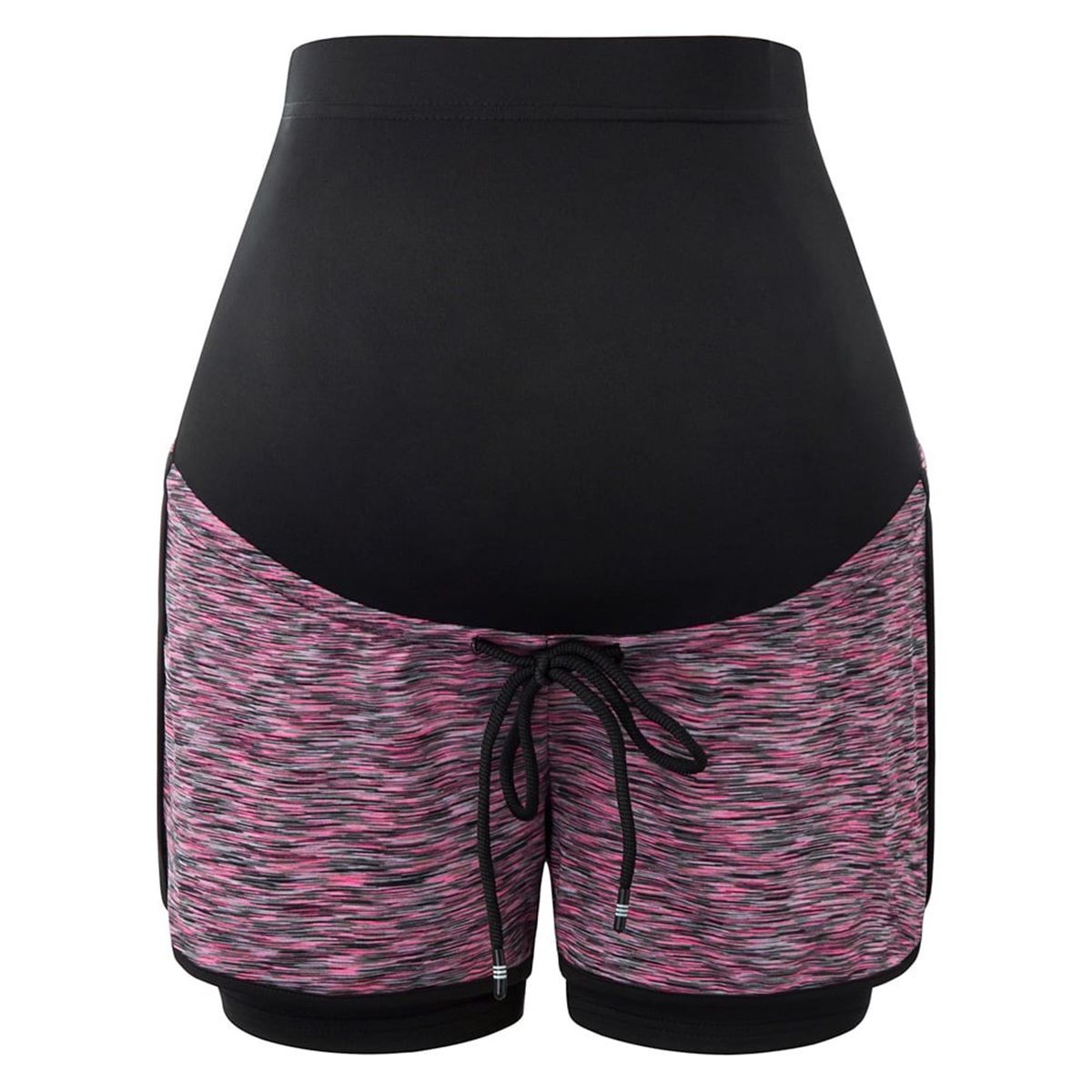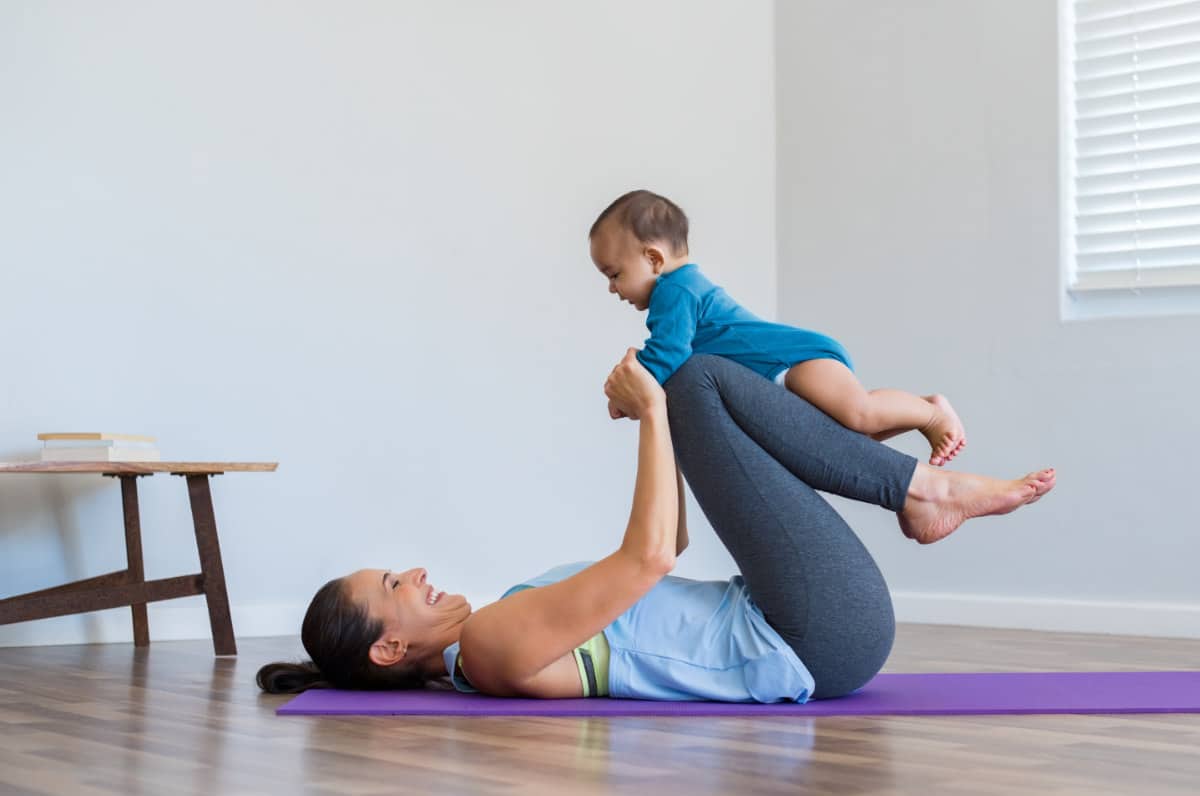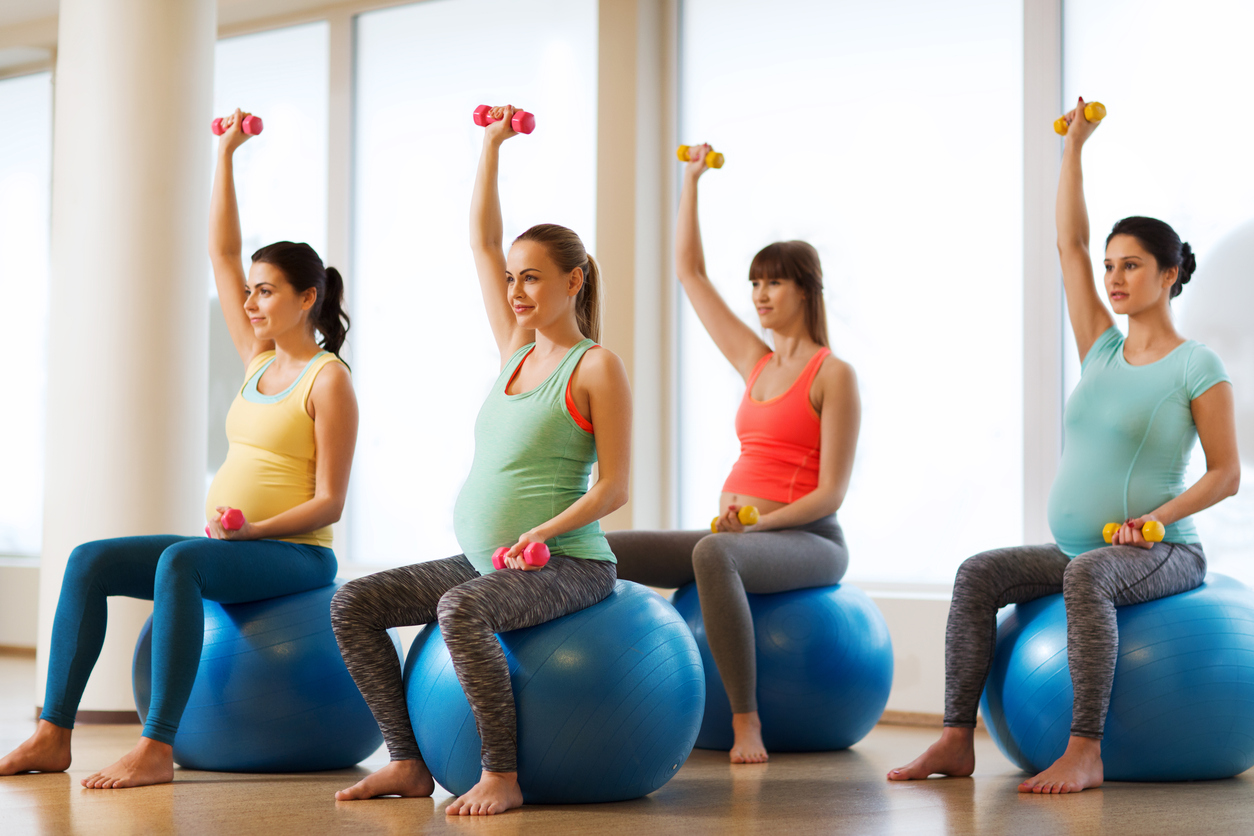Home>Misc>Featured>When Can A Baby Start Using A Jogging Stroller
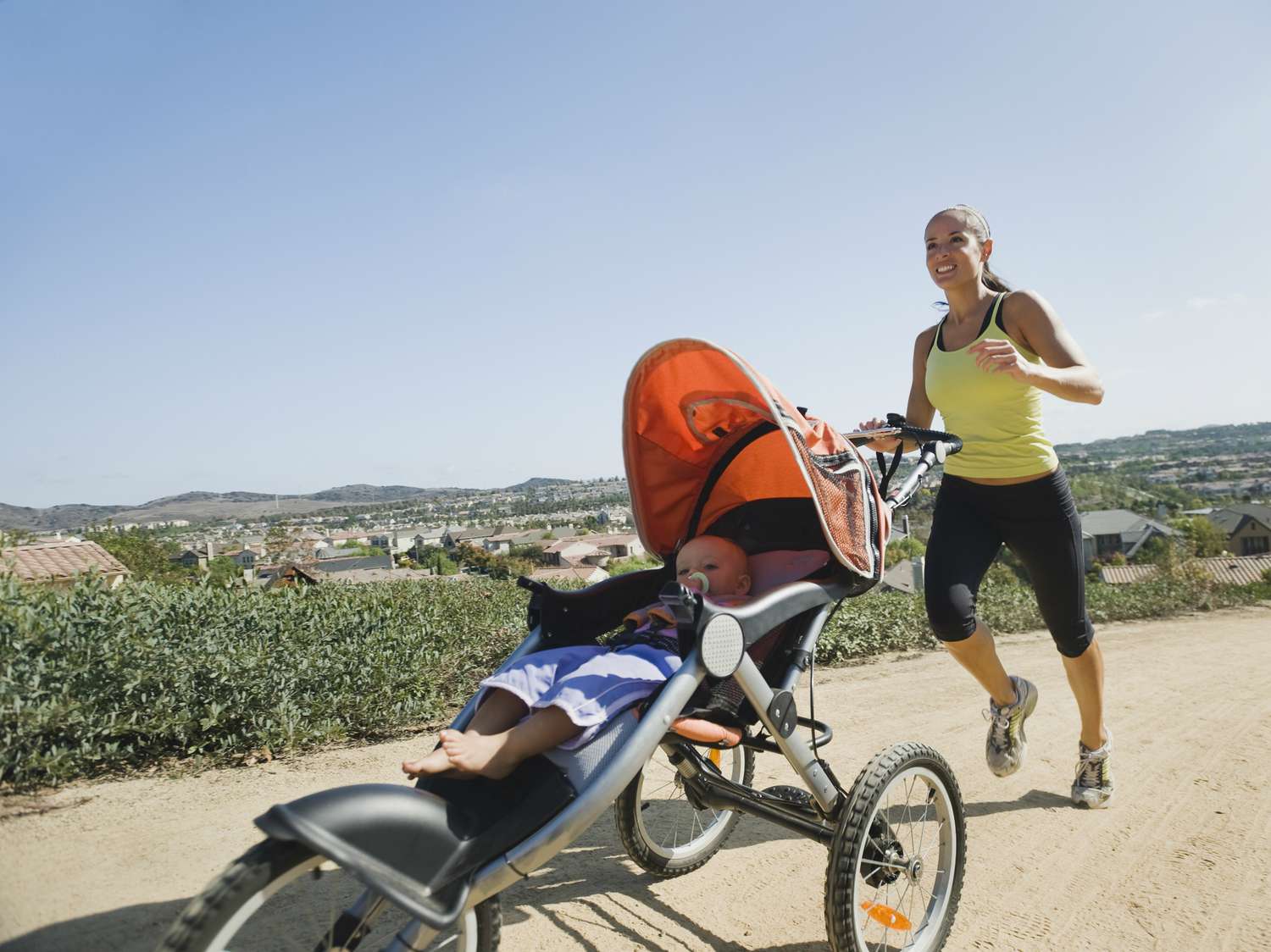

Featured
When Can A Baby Start Using A Jogging Stroller
Modified: October 24, 2023
Find out when it's safe for your baby to go in a jogging stroller. Our featured guide provides all the information you need for a smooth and enjoyable outdoor adventure.
Introduction
When it comes to enjoying a healthy and active lifestyle, many parents turn to jogging strollers as a way to incorporate exercise into their daily routines while still being able to spend quality time with their little ones. But at what age is it safe for a baby to go in a jogging stroller?
Safety is always the top priority when it comes to any activity involving infants and young children. It is essential to ensure that a baby is developmentally ready and physically capable of safely enjoying a ride in a jogging stroller. By understanding the key factors to consider and following the recommended guidelines, parents can determine the appropriate age for their baby to join them on their jogging adventures.
In this article, we will discuss the various safety considerations and developmental milestones that determine when a baby can go in a jogging stroller. It’s important to note that every child is unique, and while there are general recommendations, it’s always best to consult with your pediatrician before introducing your baby to a jogging stroller.
Safety Considerations
Before taking your baby in a jogging stroller, it’s crucial to ensure that you have taken all necessary safety precautions. Here are a few important considerations to keep in mind:
- Stroller Quality: Choose a high-quality jogging stroller with a sturdy frame, reliable suspension, and a properly fitting safety harness. Ensure that the stroller meets all safety standards and has undergone rigorous testing.
- Braking System: Make sure the jogging stroller has a reliable braking system that can quickly stop the stroller when needed. Test the brakes before using the stroller.
- Wrist Strap: Use the provided wrist strap to ensure that the stroller stays connected to you at all times. This prevents accidental slips or falls while running.
- Sun Protection: Choose a stroller with a canopy or attach a sunshade to protect your baby from harmful UV rays. Ensure proper ventilation to prevent overheating.
- Smooth Terrain: Stick to smooth and well-maintained surfaces for your jogging route. Avoid uneven or rough terrains that could potentially jolt or shake the stroller.
Additionally, always be mindful of your surroundings and potential hazards such as traffic, potholes, or obstacles. Maintaining awareness and taking necessary precautions will help ensure your baby’s safety during your jogging sessions.
Lastly, it’s essential to dress your baby appropriately for the weather conditions. Keep them comfortable and protected by dressing them in appropriate layers and putting a hat on them if necessary. Avoid excessively hot or cold temperatures.
By prioritizing safety and following these guidelines, you can enjoy your jogging routine while keeping your baby safe and secure in the stroller.
Age Recommendations
While there is no set age at which a baby can safely ride in a jogging stroller, there are general guidelines that can help determine when it may be appropriate. It is crucial to consider your baby’s physical development milestones and consult with your pediatrician for personalized advice. Here are some age recommendations to keep in mind:
- Newborns: Jogging strollers are not suitable for newborns as they lack the neck and head control necessary to maintain proper positioning. Wait until your baby has reached certain physical milestones before introducing them to a jogging stroller.
- 3-6 Months: Around three to six months of age, babies typically demonstrate improved neck and head control, making it safer for them to ride in a jogging stroller. However, it’s crucial to consult with your pediatrician before starting any jogging activities.
- 6-9 Months: By six to nine months, most babies have further developed their neck and head control and are better able to handle the motion of a jogging stroller. However, every baby develops at their own pace, so it’s essential to assess your baby’s individual readiness.
- 9+ Months: Beyond nine months, many babies have acquired the necessary strength and stability to comfortably ride in a jogging stroller. They may also have started sitting up independently, which further enhances their safety.
Remember, these age recommendations are general guidelines, and it’s crucial to assess your baby’s individual development and consult with your pediatrician. Your pediatrician can provide personalized advice based on your baby’s specific needs and readiness.
Furthermore, it’s important to gradually introduce your baby to the jogging stroller. Start with short and slow walks, gradually increasing the duration and intensity as your baby grows accustomed to the motion of the stroller.
By considering your baby’s development and seeking professional guidance, you can ensure that your baby is ready to join you on your jogging adventures.
Physical Development Milestones
When determining if your baby is ready to ride in a jogging stroller, it’s essential to consider their physical development milestones. These milestones indicate their strength, stability, and ability to handle the motion of a jogging stroller. Here are some important physical development milestones to look out for:
- Neck and Head Control: Newborns have limited neck and head control and need proper support to keep their heads in a stable position. Around three to four months, most babies start to gain better control over their neck and head movements.
- Sitting Up Independently: By around six to eight months, many babies have developed the strength and stability to sit up independently without support. This milestone is important as it signifies that their core muscles are strong enough to handle the movement experienced during jogging.
- Holding onto Handles: Babies should be able to hold onto the stroller’s handles or bar for support during the ride. This ensures they maintain a secure position and reduces the risk of them sliding or falling out.
- Strength and Stability: Babies need sufficient upper body strength and stability to handle the jogging stroller’s motion. They should be able to tolerate the slight bumps and vibrations that can occur during a jog.
It’s important to remember that these milestones can vary from baby to baby. Some may achieve them earlier, while others may take a little longer. It’s crucial to assess your baby’s individual development and consult with your pediatrician to ensure they are physically ready for a jogging stroller.
Keep in mind that physical development milestones are not the only factors to consider. Each baby is unique, and factors such as weight, overall health, and individual temperament should also be taken into account when determining their readiness for a jogging stroller.
By monitoring your baby’s physical development and seeking guidance from your pediatrician, you can ensure that they are physically prepared for the adventures that await them in a jogging stroller.
Neck and Head Control
One crucial milestone to consider when determining if your baby is ready to ride in a jogging stroller is their neck and head control. Newborns have very limited neck and head control and require proper support to keep their heads stable and aligned with their bodies. However, as they grow and develop, they gradually gain more control over their neck and head movements.
Around three to four months, most babies start to demonstrate improved neck and head control. They can hold their heads up for short periods and have less wobbling or flopping. This milestone is an important indication that their neck muscles have strengthened, allowing them to maintain a stable position when faced with slight movements and vibrations.
It’s important to wait until your baby has achieved this milestone before introducing them to a jogging stroller. Without proper neck and head control, the motion of jogging can be potentially harmful to your baby. Their heads may jerk or jostle, putting strain on their neck muscles and potentially causing injury.
When placing your baby in a jogging stroller, ensure that their neck is well-supported by using proper padding or inserts if necessary. Double-check that their head and neck remain in a stable position as you move the stroller. If your baby’s head is still flopping forward or to the side, it’s an indication that they may not have sufficient neck and head control yet.
Remember, each baby develops at their own pace, and some may take longer to achieve full neck and head control. It’s crucial to assess your baby’s individual development and consult with your pediatrician before transitioning them to a jogging stroller.
By waiting until your baby has established good neck and head control, you can ensure their safety and comfort during your jogging adventures.
Sitting Up Independently
Another important milestone to consider when determining if your baby is ready to ride in a jogging stroller is their ability to sit up independently. Around six to eight months of age, many babies develop the strength and stability to sit up without any support.
Sitting up independently is a significant milestone as it indicates that your baby’s core muscles have strengthened enough to maintain an upright position. It demonstrates better control over their body and the ability to balance themselves while sitting. This milestone is crucial for their safety and comfort during a jog in a stroller.
When your baby can sit up independently, their spine and neck are in a more aligned and stable position. This reduces the risk of their neck or head flopping forward, which is important for their overall safety during jogging activities. Additionally, sitting allows them to have a better view of their surroundings and engage with you more easily during your outings.
However, it’s important to note that the age at which babies achieve independent sitting can vary. Some babies may develop this skill earlier, while others may take a little longer. It’s crucial to assess your baby’s individual progress and consult with your pediatrician to determine their readiness.
Before placing your baby in a jogging stroller, ensure that they can sit up confidently and maintain their balance without any support. Observe their ability to sit for extended periods without toppling over or requiring assistance. If your baby still needs support or shows signs of instability, it may be best to wait until they have mastered independent sitting.
By waiting until your baby can sit up independently, you can ensure their safety and comfort while enjoying your jogging sessions together.
Holding onto Handles
As your baby progresses in their physical development, another crucial milestone to consider when determining their readiness for a jogging stroller is their ability to hold onto the handles or bar of the stroller.
Holding onto the stroller’s handles is important for several reasons. First and foremost, it ensures that your baby maintains a secure position within the stroller, reducing the risk of them sliding or falling out during a jog. It also allows them to feel more engaged and involved in the experience, as they can hold onto the stroller and have a sense of control over their own movements.
Around the age of six to nine months, many babies start to develop the grip strength and coordination necessary to grasp onto the handles of a jogging stroller. They may reach out and grab onto the bar or handlebar, holding onto it as you go for a jog.
However, keep in mind that every baby develops at their own pace, and the ability to hold onto the handles may vary. Some babies may show this capability earlier, while others may take a little longer. It’s crucial to assess your baby’s individual progress and consult with your pediatrician for guidance.
Before taking your baby for a jog in a stroller, test their ability to hold onto the handles. Encourage them to grab onto the bar or handlebar and observe how well they can hold on during movement. Ensure that their grip is secure and that they can maintain their hold throughout the duration of the jog.
If your baby struggles to hold onto the handles or does not yet demonstrate the necessary hand-eye coordination, it may be best to wait until they have further developed this skill. Always prioritize their safety and comfort when embarking on a jogging adventure.
By waiting until your baby can confidently hold onto the handles, you can ensure a more secure and enjoyable jogging experience for both you and your little one.
Strength and Stability
When determining if your baby is ready to ride in a jogging stroller, it’s important to assess their strength and stability. These factors are crucial for their comfort and safety during the jog. Every baby develops at their own pace, so it’s essential to observe your baby’s strength and stability and consult with your pediatrician.
Strength refers to your baby’s muscle development, particularly in their core, neck, and upper body. They need sufficient strength to tolerate the slight movements and vibrations that occur during a jog. These muscle groups support their posture and provide stability during the ride.
Stability, on the other hand, refers to your baby’s ability to maintain balance and control their body movements. This involves having good control over their trunk and being able to respond to the motions and changes in the jogging stroller. A baby with sufficient stability will be able to react and adjust to the stroller’s movements without feeling excessively jolted or unsettled.
Around the age of nine months or older, many babies have developed the necessary strength and stability to comfortably ride in a jogging stroller. However, it’s important to remember that every baby is unique, and the timeline for achieving adequate strength and stability may vary.
Before taking your baby for a jog, observe their ability to support their own weight and maintain a stable position. You can do this by assessing how well they sit up independently, hold their head up, and respond to slight movements and changes in their surroundings.
It’s crucial to ensure that your baby’s strength and stability are sufficient to handle the motions and vibrations of the jogging stroller. If your baby seems unsteady, struggles to maintain their balance, or appears uncomfortable during short test runs, it may be best to wait until they have further developed their strength and stability.
Consulting with your pediatrician can provide valuable insights into your baby’s strength and stability and help determine their readiness for a jogging stroller.
By waiting until your baby has the necessary strength and stability, you can enhance their safety, comfort, and overall enjoyment during your jogging adventures together.
Using Car Seat Adapters
Car seat adapters can be a convenient and practical accessory for jogging strollers, particularly for parents of newborns or infants. These adapters allow you to attach an infant car seat directly onto the stroller, providing a safe and secure mode of transportation for your baby during your jog.
Using a car seat adapter can offer several benefits. Firstly, it allows you to start using a jogging stroller from an early age, even before your baby has developed the necessary neck and head control, or the ability to sit up independently. This is because infant car seats are specifically designed to provide proper support and protection for newborns and young infants.
When using a car seat adapter, it’s essential to ensure that the jogging stroller is compatible with your specific car seat model. Different stroller brands may have their own car seat adapter systems, designed to securely attach and lock the car seat into place. Always follow the manufacturer’s instructions when installing the car seat adapter to ensure a proper and secure fit.
Using a car seat adapter can provide added safety for your baby during the jog, as the car seat offers extra cushioning and protection against bumps and vibrations. It also allows you to keep your baby at eye level, making it easier to keep an eye on them and interact with them during your run.
However, it’s important to note that while using a car seat adapter can be convenient for jogging with a young baby, it’s recommended to transition to the regular stroller seat as soon as your baby reaches the appropriate age and development milestones. The car seat should only be used in the adapter for short periods, such as during a jog, and not as a long-term seating solution.
Always check the weight and age restrictions provided by both the car seat and the stroller manufacturer to ensure that you are using the car seat adapter safely and according to their recommendations.
Consulting with your pediatrician before using a car seat adapter and starting jogging activities with your baby is always recommended. They can provide guidance specific to your baby’s needs and developmental stage.
By using a compatible car seat adapter, you can safely incorporate your baby into your jogging routine from an early age, providing them with a comfortable and secure ride.
Conclusion
Determining the appropriate age for a baby to go in a jogging stroller is a decision that requires careful consideration of various factors. Safety considerations, age recommendations, physical development milestones, and the use of car seat adapters all play a role in determining when it is safe and suitable for your baby to join you on your jogging adventures.
Prioritizing safety should always be the top concern when it comes to any activity involving infants and young children. Ensuring that you have chosen a high-quality jogging stroller with proper safety features, such as a reliable braking system and a secure harness, is essential. Additionally, being mindful of the environment you’re jogging in and staying aware of potential hazards is crucial for your baby’s well-being.
Age recommendations can provide general guidelines, but it’s essential to consider your baby’s individual development and consult with your pediatrician for personalized advice. Factors such as neck and head control, sitting up independently, and the ability to hold onto handles are important milestones to assess before introducing your baby to a jogging stroller.
If your baby is too young for independent sitting or lacks necessary neck and head control, car seat adapters can be a suitable option. These adapters allow you to attach your infant car seat directly onto the jogging stroller, providing a safe and secure way to include your baby in your jog. However, it’s important to transition to the regular stroller seat as soon as your baby reaches the appropriate age and developmental milestones.
Remember, every baby is unique, and it’s crucial to consider their individual readiness and consult with your pediatrician before introducing them to a jogging stroller. By prioritizing safety, observing important milestones, and seeking professional guidance, you can ensure that your baby can safely and comfortably join you on your active adventures.
